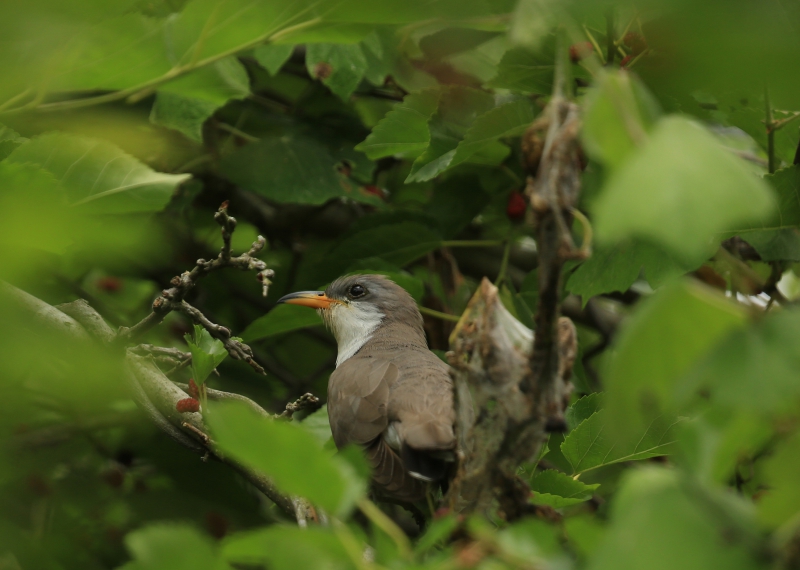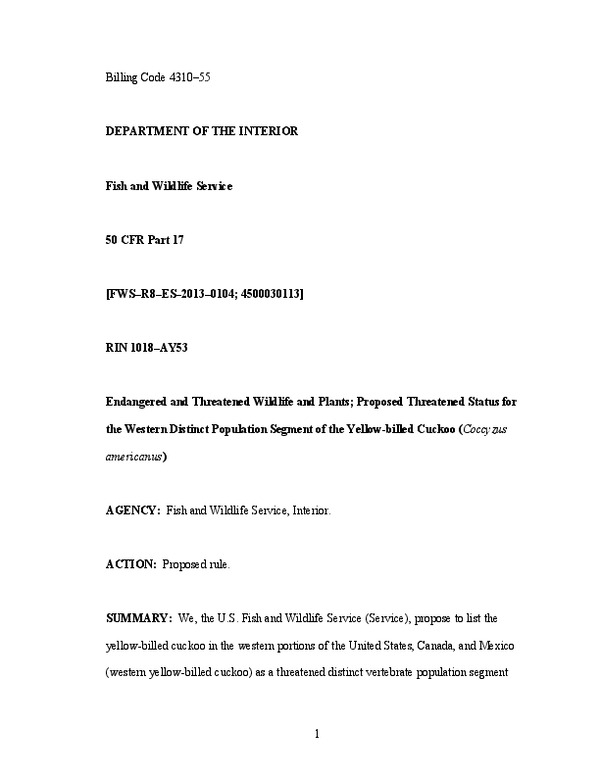From the Open-Publishing Calendar
From the Open-Publishing Newswire
Indybay Feature
Yellow-billed Cuckoo Proposed for Endangered Species Act Protection in U.S. West
SACRAMENTO, Calif.— The U.S. Fish and Wildlife Service proposed Endangered Species Act protection today (see PDF) for the yellow-billed cuckoo, following a 2011 agreement with the Center for Biological Diversity to speed protection decisions for 757 imperiled species nationwide.
“The decline of the cuckoo across the West is a symbol of the tragic decline of our rivers,” said Noah Greenwald, the Center’s endangered species director. “With just a little more care, we can restore those rivers — not just for cuckoos and hundreds of other animals and plants, but for people too.”
The yellow-billed cuckoo, often called the “rain crow” for its habit of singing right before storms, breeds in streamside gallery forests of cottonwood and willow that once thrived along nearly every water body in the West. It has been devastated by dams, livestock grazing, water withdrawals, river channelization and other factors. Once common from the shores of Lake Washington in Seattle to the mouth of the Colorado River, today it can be found in only a handful of locations: portions of the Sacramento and Kern Rivers in California, the Colorado, Verde and San Pedro rivers in Arizona, the Gila and Rio Grande rivers in New Mexico and scattered locations in Colorado, Nevada and Utah.
“The petition to protect yellow-billed cuckoos was the first I ever worked on, back in 1998,” said Greenwald. “I had no idea then that getting protection for this severely imperiled songbird would take 15 years, but I’m glad it finally has a great chance of recovering.”
A striking bird with a long tail with flashy white markings, the cuckoo is one of the few species that can eat spiny caterpillars such as tent caterpillars. Under the settlement agreement with the Center, 117 species have been protected so far, and another 63 have been proposed for protection, including the cuckoo.
http://www.biologicaldiversity.org/news/press_releases/2013/yellow-billed-cuckoo-10-02-2013.html
http://www.biologicaldiversity.org/
Photo courtesy Flickr Commons/Seabamirum
The yellow-billed cuckoo, often called the “rain crow” for its habit of singing right before storms, breeds in streamside gallery forests of cottonwood and willow that once thrived along nearly every water body in the West. It has been devastated by dams, livestock grazing, water withdrawals, river channelization and other factors. Once common from the shores of Lake Washington in Seattle to the mouth of the Colorado River, today it can be found in only a handful of locations: portions of the Sacramento and Kern Rivers in California, the Colorado, Verde and San Pedro rivers in Arizona, the Gila and Rio Grande rivers in New Mexico and scattered locations in Colorado, Nevada and Utah.
“The petition to protect yellow-billed cuckoos was the first I ever worked on, back in 1998,” said Greenwald. “I had no idea then that getting protection for this severely imperiled songbird would take 15 years, but I’m glad it finally has a great chance of recovering.”
A striking bird with a long tail with flashy white markings, the cuckoo is one of the few species that can eat spiny caterpillars such as tent caterpillars. Under the settlement agreement with the Center, 117 species have been protected so far, and another 63 have been proposed for protection, including the cuckoo.
http://www.biologicaldiversity.org/news/press_releases/2013/yellow-billed-cuckoo-10-02-2013.html
http://www.biologicaldiversity.org/
Photo courtesy Flickr Commons/Seabamirum
Add Your Comments
We are 100% volunteer and depend on your participation to sustain our efforts!
Get Involved
If you'd like to help with maintaining or developing the website, contact us.
Publish
Publish your stories and upcoming events on Indybay.
Topics
More
Search Indybay's Archives
Advanced Search
►
▼
IMC Network




